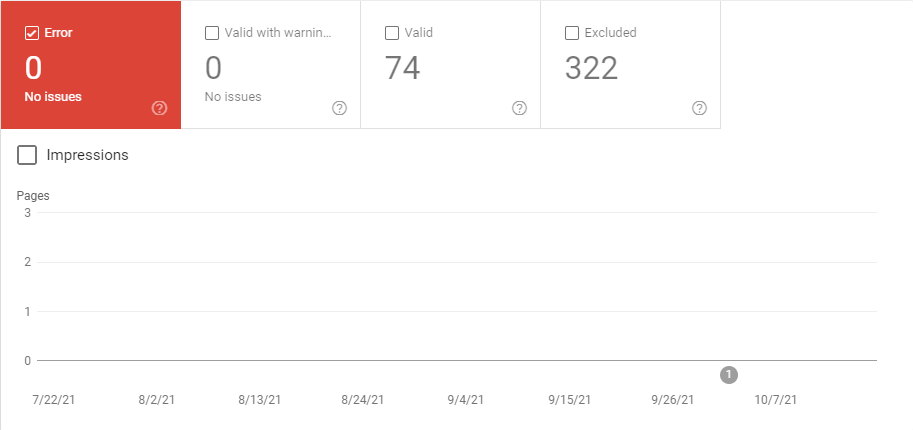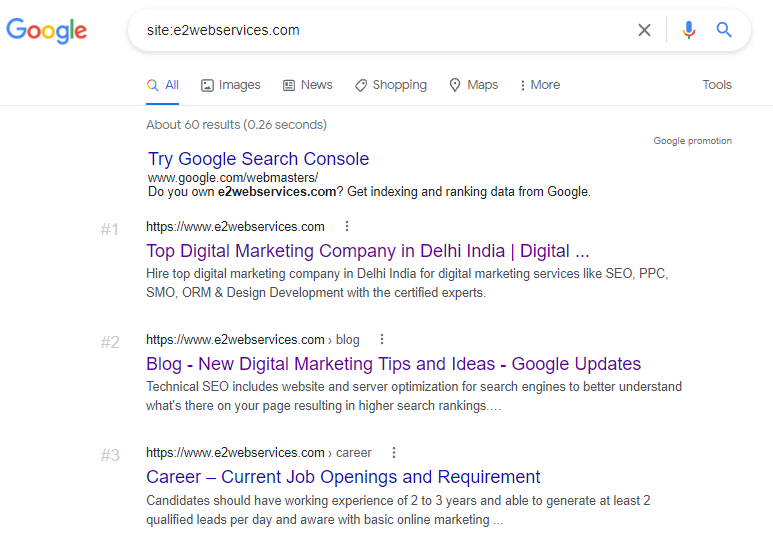Best Website Audit Technique to Improve Your SEO in 2022
Performing a website audit technique requires an understanding of many more factors than crawling and indexing. If you want to create a technically sound website, it should be secure, fast loading, easy for crawlers to navigate, and should not contain duplicate content or links.
Having 404 errors and 301 redirect pages for when users reach dead ends should also be built-in; for example, content can be created for such errors. Additionally, search engines should be able to understand your content if your website has structured data. Schema graphs and XML sitemaps can be used to accomplish this and this can be done by SEO companies.
What Is a Website Audit? Knowing it in and out is important.
In search engine optimization (SEO), or before redesigning a website, a website audit determines the performance of each page. By auditing your website, you will know if it is optimizing to reach your traffic objectives, and if it isn’t what can be done to improve it.
The purpose of an SEO audit is to determine how responsive your website is to search engines. Make sure you don’t over optimize your website when performing a technical SEO audit. You can actually hurt your SEO rankings if you make too many improvements.
How Do SEO Audits Work?
Search engine optimization audits can help businesses differentiate themselves from their opponents, identify opportunities within their website, and fix hard-to-fix issues to create better customer experiences and outcomes. Technical, on-page, and off-page SEO audits should be performed regularly for optimal SEO success.

By going through your audit, you will find areas where your website can be improved in order to keep site visitors happy, as well as improve performance. There’s no need to fix every error at once; you just need to determine what is broken and take steps to resolve it.
Website audit benefits to understand, addressing the reasons why audit is important?
-
Optimization of website performance
The audit of a website usually evaluates both its technical performance and its content.So you can check the functionality, the stability, and the search engine performance of your website, as well as determine the ease of navigation and intuitiveness of your content.

-
Optimization for Search Engines
An audit of your website can help you find any missed SEO possibilities and fix any misguided or poorly executed SEO pitfalls on your website (e.g. keyword stuffing, anchor text links that match exact matches, etc.) by checking all the content on your web pages.

Additionally, it will change your focus from optimizing for exploring engines to optimizing for users. The benefit of this strategy is that you won’t need to chase constantly changing search ranking algorithms, therefore, you won’t be utilizing misguided techniques to show up on search engine result pages (SERPs).
-
Optimization of Conversion Rates
By conducting a website audit, you can also estimate how effective your website is at generating leads and converting visitors. Thus, you will be able to spot any potential conversion opportunities for leads directly on the landing page, as well as determine any deficiencies in the landing page that can be optimized to boost conversion.

-
Identify issues that are hidden
A website audit will help you identify issues that will harm your SEO and conversions. Broken links, hidden files, slow load speeds, etc. It is important to identify issues that divert traffic so you can correct them.
By assessing your website’s technical and content aspects, you can dramatically increase the volume of traffic and conversions it generates. The objective of a website audit is to determine whether your website is functioning correctly and if it has potential for improvement.

The Things You Need to Check during SEO Audit
-
Measure your ranking and learn about your competitors
You must understand the competition before you get into a technical or on-page audit.To be successful, you must know what other players in the same arena are doing, whether you are working on a new site for the very first time or performing audits as part of your ongoing strategy.The rankings of your site should be benchmarked against the competition, along with your site’s performance. If you have not already done so, you should start tracking your rankings.

Create a new project in the position tracking tool.When you select a device, location, search engine, and language, you can build out your campaign now. Also, you need to add the full name of your business.
-
Examine Google’s index to see if your site is duplicated
Check this box to ensure that Google is indexing only the published version of your site, which is the simplest but most important thing you can do on your site. Unsure?This is a different version of the site from the search engine’s perspective. There should be only one version indexed on your website, and duplicate content should be checked. Checking duplicate content is very simple. A good SEO Company can help you out in this. Go to Google and type site:domain.com into the search box. Your domain’s indexed URLs are returned here. You may have a problem if you see both versions of the site.

Alternatively, you can type each URL into your browser. The site will redirect you to a single version, regardless of the browser you are using. Should all versions not redirect to one, 301 redirects them all.
-
Verify whether manual actions have been taken
Google can (and sometimes does) issue a manual action if you violate Google’s Webmaster Quality Guidelines. The term “manual penalty” is used to apply. This means that your site will no longer rank highly until the action is reversed. The action can either be page-specific or site-wide; the results depend on the type of revocation. Using Search Console, you can determine whether your site has been manually reviewed. You’ll find the ‘Security & Manual Actions’ tab along the left-hand side of the page, as well as a link for manual actions under this area.

You will see the current status of your application as soon as you click it. There should be a green checkmark showing that no issues have been detected.
-
Analyze Your Site’s Speed
It’s been important to have a fast website for quite some time.Google made speed a factor in mobile search ranking back in 2018 with the Page Speed Update.
In the coming years, we will see Google bringing a new Page Experience Update. UX is becoming more deeply engrained in the success of SEO than ever before, as many have suspected for some time.

There is no denying the importance of speed. Data from Google shows that the faster a page loads, the greater the chance of users bouncing away. The speed of your website is more critical than ever from a search engine optimization as well as a user experience perspective.
-
Make sure you use HTTPS on your site
Your website should use HTTPS if it isn’t. There is no other choice.If you’d like to see this, you should go to https://www.domain.com.
SSL certificates are mandatory if you are still running on HTTP. Since 2014, HTTPS signals have been ranking signals.

Let’s Encrypt makes this possible for free.
-
Make sure your site is mobile-friendly
It’s no longer enough to be mobile-friendly, and if you aren’t putting the user’s experience first, then it’s very unlikely that you will succeed.Ranking factors include mobile-friendliness since 2015. Most websites are now responsive or have separate mobile versions, but this does not mean there are no issues.

Additionally, the update to The Page Experience in 2021 will include mobile friendliness. In Search Console, under the Enhancements tab, you’ll find a section dedicated to mobile usability.
-
Resolve broken links within the website
User experience is adversely affected when internal links are broken. Users expect to see the page they clicked on, not a 404 error message when they click a link on your site. Apart from that, a 404 error message represents poor site quality to search engines.A Site Audit report includes a section that highlights broken internal links. Simply replace the internal link with the correct URL or delete the link, and that should fix the problem.

-
Make sure your sitemap is clean
A sitemap should contain primary pages on your site that Google should index based on information from the XML sitemap.Site Audit reports show errors related to incorrect URLs within your sitemap. The sitemap file contains URLs that return 200 status codes, redirect to another webpage, or link to the same webpage with different content.

Whenever you spot an error in your sitemap, remove the page as quickly as possible.
-
Toxic links must be checked
You cannot rank with every link. A link that violates Google’s Webmaster Guidelines if it attempts to manipulate your search rankings is considered to be manipulating your search ranking. If you are conducting an SEO audit for the first time, you must check for toxic links and here you can get help from E2wab Services.Toxic links can be easily identified with Backlink Audit so that these links can be removed to prevent a negative impact on your site’s performance.

-
Identify duplicate content and fix it
You may not rank as highly as you would be able to if you have duplicate content on your site. The engines may even consider it to be spam.

When two pages are duplicated, which should rank higher? Additionally, duplicate content may also be viewed as a matter of manipulating rankings. This formerly was viewed as a major problem but is now considered less so. Site Audit includes a section for finding duplicate content issues.
And… DONE!
Audit of SEO done!
The steps you have followed should have allowed you to identify loads of ways you can improve your rankings through changes to your website.
If the site is large, then a full forensic SEO audit can take a few days or even weeks. This process can really help customers get an idea of a site’s current condition and how they might launch a new SEO campaign.

Shyam Kumar is an accomplished author with years of experience in crafting high-quality, engaging content that drives traffic and boosts rankings. He has a keen understanding of search engine algorithms and is skilled at creating content that not only ranks well but also resonates with readers. His dedication and expertise make him a valuable asset to any SEO team.


